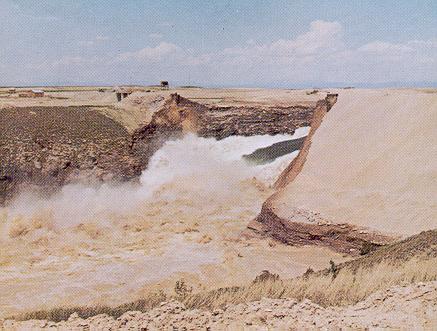FALL 2013
FINAL EXAM
MONDAY, MAY 12, 2014, 1530-1730
Name: ____________________ Red ID __________________ Grade: __________
Instructions: Closed book, closed notes. Use engineering paper. When you are finished, staple your work in sequence (1 to 4), and return this sheet with your work.
-
(20%) A hydraulically wide channel is operating at Froude number F = 0.2. The unit-width discharge is q = 1.5 m2s-1. What are two Langrange absolute celerities?
(20%) You are observing the rising flood stage of a major river. At your observation point, at a certain time the discharge is 450 m3 s-1 and the stage is rising at the rate of 6 mm hr-1. At a distance located 14 km upstream, the stage is rising at the rate of 8 mm hr-1. The average surface width of the river between the two observation sections is 165 m. What is your estimate of the present discharge at the upstream cross setion?
(10%) Teton Dam failed June 5, 1975, in Idaho, releasing 2,000,000 cfs. At a distance of 100 miles downstream, the flow was estimated at 50,000 cfs. What type of wave was most likely acting?

- (50%) Please answer each question in one clear and concise paragraph:
- Why does the hydraulic jump occur? What is the formula for the energy loss in terms of sequent depths?
- Which open-channel flow wave attenuates the most? Which wave does not attenuate at all?
- What is the difference between a debris flow and a lahar?
- What are three ways in which the Seddon formula can be expressed?
- What is the hydraulic diffusivity? Which channel attenuates more: (a) a steep channel, or (b) a mild channel?
- What is the shape of an inherently stable channel? How does the velocity vary with the stage in an inherently stable channel?
- What is the Courant number? For what Courant number is the Muskingum-Cunge method likely to be more accurate? Why?
- Which one is the most complete sediment transport formula?
- What is the difference between sediment production and sediment yield? Why is there a difference?
- What is the difference between sediment transport and sediment routing?